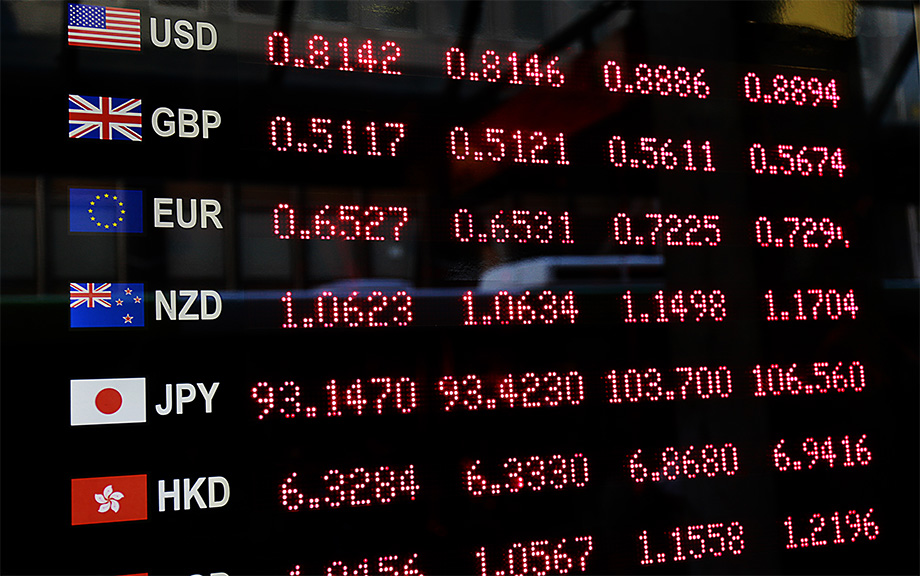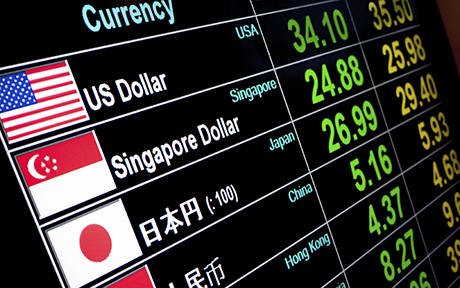Towards Increasing Complexity: The Evolution of the FX Market
Editor’s note: Since this post was first published, the first paragraph under the “Looking Forward” subhead has been updated to clarify the expected increase in the speed of FX transaction settlements. (Jan. 25, 2:30 p.m.)

The foreign exchange market has evolved extensively over time, undergoing important shifts in the types of market participants and the mix of instruments traded, within a trading ecosystem that has become increasingly complex. In this post, we discuss fundamental changes in this market over the past twenty-five years and highlight some of the implications for its future evolution. Our analysis suggests that maintaining a healthy price discovery process and fostering a level playing field among participants are areas to watch for challenges. The consequences of the evolution of the FX market—well beyond those anticipated twenty-five years ago—remain active areas of research and policy consideration.
The Effect of Exchange Rate Shocks on Domestic Prices

Mary Amiti, Oleg Itskhoki, and Jozef Konings Changes in exchange rates directly affect import prices. Since the beginning of 2014, the U.S. dollar has strengthened by 17 percent against the currencies of its major trading partners while import prices have fallen by 4 percent. The pass-through from exchange rates into import prices in the United […]
Global Asset Prices and the Taper Tantrum Revisited
Global asset market developments during the summer of 2013 have been attributed to changes in the outlook for U.S. monetary policy, starting with former Chairman Bernanke’s May 22 comments concerning future curtailing of the Federal Reserve’s asset purchase programs.
Why Hasn’t the Yen Depreciation Spurred Japanese Exports?
The Japanese yen depreciated 30 percent from its peak in the fourth quarter of 2011 against its trading partners.
Risk Aversion, Global Asset Prices, and Fed Tightening Signals
The global sell-off last May of emerging market equities and currencies of countries with high interest rates (“carry-trade” currencies) has been attributed to changes in the outlook for U.S. monetary policy, since the sell-off took place immediately following Chairman Bernanke’s May 22 comments concerning the future of the Fed’s asset purchase programs.
Crisis Chronicles: 300 Years of Financial Crises (1620–1920)
James Narron and David Skeie As momentous as financial crises have been in the past century, we sometimes forget that major financial crises have occurred for centuries—and often. This new series chronicles mostly forgotten financial crises over the 300 years—from 1620 to 1920—just prior to the Great Depression. Today, we journey back to the 1620s […]
The Exchange Rate Disconnect
Why do large movements in exchange rates have small effects on international goods prices?
An Examination of U.S. Dollar Declines
Although the dollar strengthened somewhat recently, its level relative to the currencies of the United States’ main trading partners is nonetheless 11 percent lower than it was at the start of 2009.
How Easy Is It to Forecast Commodity Prices?
Over the last decade, unprecedented spikes and drops in commodity prices have been a recurrent source of concern to both policymakers and the general public. Given all the recent attention, have economists and analysts made any progress in their ability to predict movements in commodity prices? In this post, we find there is no easy answer. We consider different strategies to forecast near-term commodity price inflation, but find that no particular approach is systematically more accurate and robust. Additionally, the results warn against interpreting current forecasts of commodity prices upswings as reliable and dependable signals of future inflationary pressure.














 RSS Feed
RSS Feed Follow Liberty Street Economics
Follow Liberty Street Economics